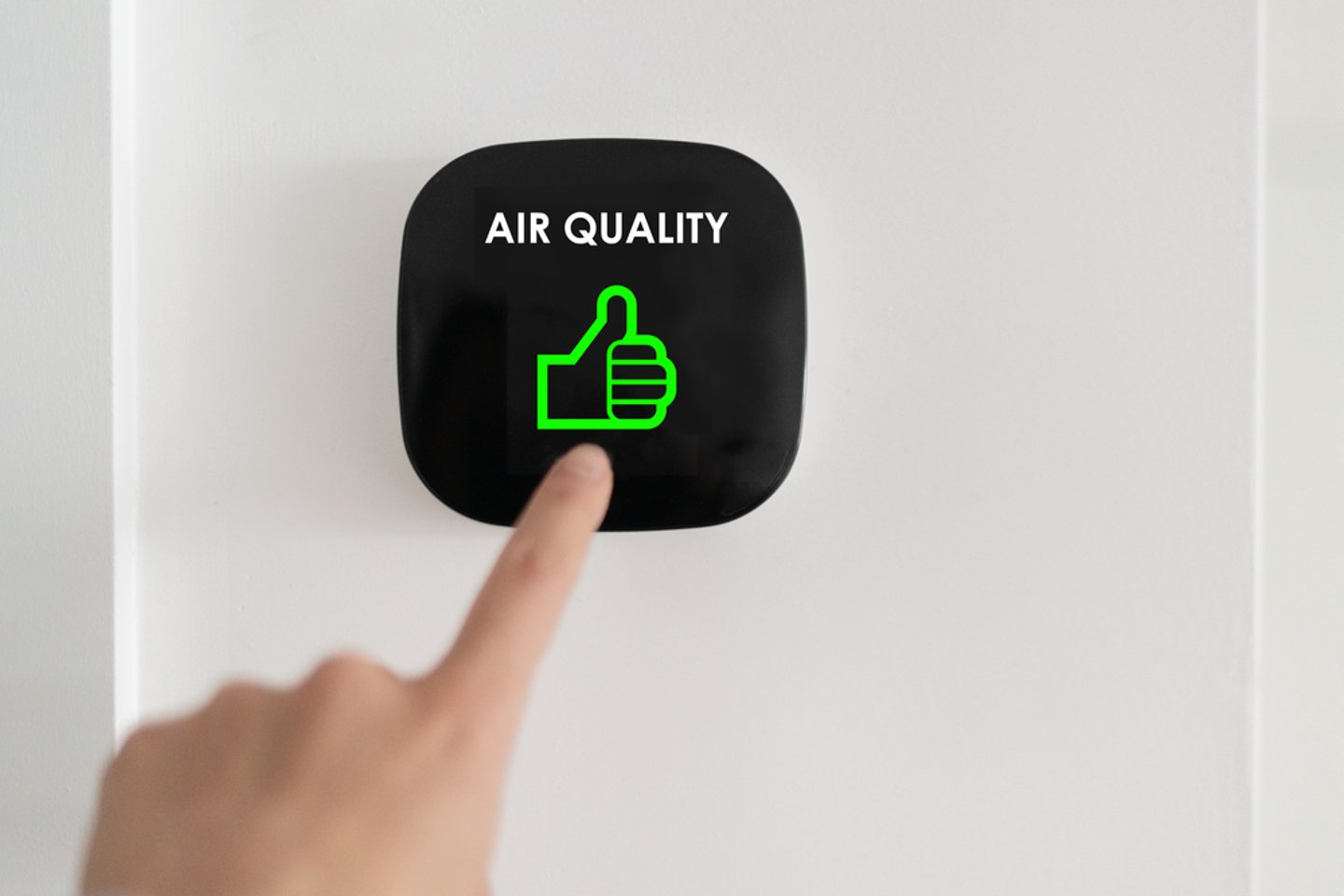How Hotels Can Create a COVID-19 Secure Environment with Air Quality Monitoring and Ventilation
Consumers are strongly considering air quality when deciding whether or not they will be visiting public buildings. A recent survey of more than 1,000 U.S. consumers revealed that 91% of consumers believe indoor air quality (IAQ) is important in preventing COVID-19 spread. Additionally, 76% said that a ‘rating system’ on the IAQ of a building, similar to a restaurant rating, would help them feel better about entering that building, be it a school, place of worship, or hotel.
For hotels, implementing air quality monitoring systems and improving filters is a great way to make guests feel safe in the hotel's facilities and drive bookings. But the onus is on the industry to react quickly. As competition for the holiday season heats up, how can hotels convince those customers that are on the fence that their building is safe?
Lessons From the Past Year
Occupancy levels in hotels have fluctuated dramatically throughout the pandemic. Many managers have had to lower their operating and energy costs, which has led to performance issues and poor air quality in some cases where heating, ventilation, and air conditioning (HVAC) systems haven’t been maintained.
On the other hand, the public interest in indoor quality has inspired many hotel managers to try to create a COVID-19 secure environment for guests. The most common method of improving HVAC filtration is to upgrade with MERV-13. But it's not easy to renew the public's trust with these filter upgrades–it can be expensive if it requires a complete overhaul.
Aside from these filter upgrades, some hotels are also asking guests about their coronavirus status just to be extra careful. These hotels require proof of negative tests or full vaccination, and some are testing on-site and regularly measuring body temperature.
Practical Steps to Achieve Better Air Quality
Well-designed ventilation solutions provide hotel guests with a healthy and comfortable environment by diluting indoor pollutants and improving humidity control for mold growth mitigation. Outside air systems, dehumidification, and high-efficiency filters can all minimize the risk of microbial growth and the spread of pathogens.
Developments in ultraviolet disinfection have also raised the possibility of UV robotic cleaning devices. The antimicrobial activity of UV can represent an alternative to traditional cleaning products instead of using surface disinfectants.
There are four essential tips that all hotels should stick to:
-
Maintain 40-60% humidity to combat the spread of viruses
-
Increase outdoor ventilation by creating a through-draft
-
Use HVAC only in occupied spaces
-
Deploy Ultraviolet germicidal irradiation (UVGI) solutions
In addition to these ventilation strategies, air quality monitoring is crucial to prove to guests that their health and wellbeing are a vital priority. In the past, hotels may have been able to get away with leaving a sticker on the door to say that a room has been sanitized, but now customers demand more comprehensive evidence.
A visual dashboard that displays real-time information regarding metrics such as humidity, temperature, and CO2 levels is a more trustworthy option for hotels. Hotel managers can even consider providing access points through QR codes which take guests straight to an application with the metrics on their mobile. Although having this information available to customers means hotels are open to criticism, it gives hotels an incentive to clean up their act - hotels that have impressive metrics can even use them as a marketing tool.
Too many hotels are performing air monitoring and filtering methods that are invisible to guests and staff. Displaying the metrics to the customers makes them feel confident, as they can clearly see the effort that hotels are putting into their safety.
Building an Ideal Future Working Environment
The hospitality industry is in the midst of a crisis – to prevent staff turnover from continuing at its current devastating rate (73.8% annually), hotels need to create the perfect environment for employees to work and guests to stay. One of the main issues with hotel work is that it is mistakenly perceived as being low-skilled and low-paid, and so many young people are not pursuing a career in the industry, having been laid off during the pandemic.
Safety is not just a concern for guests, but employees too. After all, employees spend significantly more time in the hotel, so good ventilation and monitoring strategies can let reliable prospective employees know their wellbeing is valued. According to a recent study looking into the Challenge of Indoor Air Quality Management in the hospitality industry, indoor air quality monitoring is the only way that hotels can verify exposure to contaminants over an extended period.
We need to ensure that hotels utilize sensors on a widespread basis to analyze the situations that cause peaks in contaminant levels (e.g., morning check-in or evening meals). That way, hotels can establish a secure environment for guests and employees. Having learned important lessons from the pandemic over the past year, hotels are well equipped to make vital air quality monitoring changes and take practical measures to attract guests through their doors once more.
ABOUT THE AUTHOR
John Bohlmann is the founder and CEO of HawkenAQ, a building technology company working to make every building healthy and COVID-safe.
HawkenAQ's mission is to make healthy buildings achievable and affordable for business owners anywhere in the world. We combine real-time monitoring and the latest health standards to give every visitor confidence in the air quality of our buildings. John and his team have built and deployed modern building automation technologies in over 100 million square feet and over 100 cities around the world.
John is also the founder of HawkenIO, a technology consultancy that partners with startups and Fortune 500 companies in multiple industries to build innovative new products from scratch. He is a general partner at SpaceFund, a venture capital firm with investments in SpaceX and other startups in private spaceflight. His educational background comprises the study of computer science and entrepreneurship at Purdue University and Princeton University.

